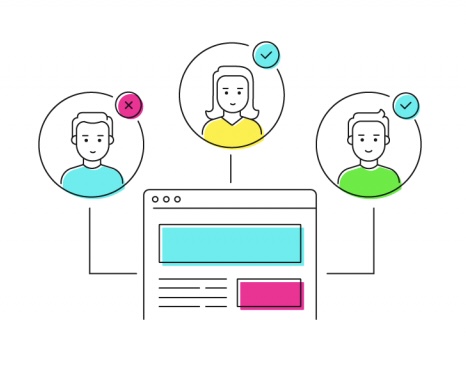Module 9: User Testing
User testing, also known as usability testing or user experience testing, is a method used to evaluate the usability and user-friendliness of a product or service. It involves observing and gathering feedback from real users as they interact with the product or service to identify potential issues, assess user satisfaction, and make improvements. 
Table of Contents
Outcomes
Upon completion of this module, you should be able to:
- Conduct user testing to gather feedback and insights about the user experience and make iterative improvements to the software solution.
How Users Use a Product or Service
The main objective of user testing is to understand how users actually use a product or service, as opposed to how developers or designers assume it will be used. By directly involving users in the testing process, organizations can gain valuable insights into user behavior, preferences, and challenges. This feedback helps identify areas of improvement, uncover usability issues, and guide design decisions.
The Importance of User Testing
During a user testing session, participants are typically given specific tasks to complete using the product or service. These tasks may include common actions that users are expected to perform. The users’ interactions are observed, recorded, and analyzed to understand their experience, challenges faced, and areas where improvements can be made.
User testing can be conducted through various methods, such as:
-
Moderated Testing: A researcher or facilitator guides participants through the testing process, asking questions, and providing instructions or clarifications as needed.
-
Unmoderated Testing: Participants perform the tasks independently without direct guidance or observation. Their interactions are recorded for later analysis.
-
Remote Testing: Users participate in testing sessions from their own locations, using remote collaboration tools and screen-sharing technologies.
The data collected during user testing sessions may include observations, participant feedback, task completion times, error rates, and subjective ratings of user satisfaction. This information helps inform design decisions, prioritize improvements, and create a better user experience.
User testing is an iterative process that is often conducted throughout the product development lifecycle, starting from the early design stages and continuing even after the product is released. It helps ensure that the final product meets the needs and expectations of its intended users, resulting in improved usability, customer satisfaction, and overall success.
What’s Next
Now we can start looking at fine tuning our User’s experiences. We’ll next take a look at digital accessibility; making our digital products available to everyone.